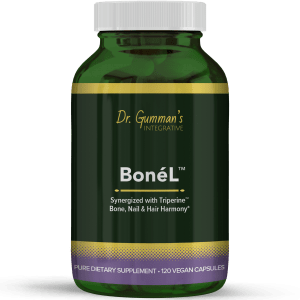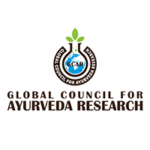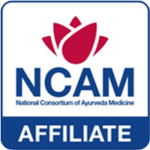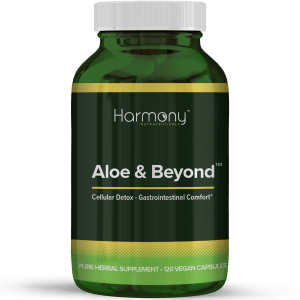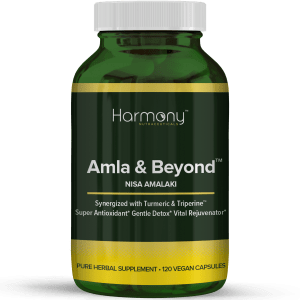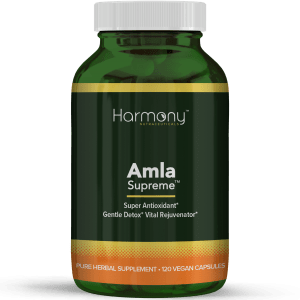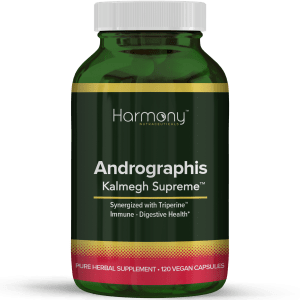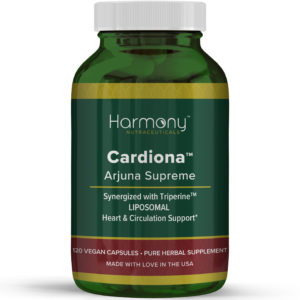Showing the single result
Bone’L™ (Bone, Nail & Hair Support)
Bone’LTM contains highly bio-available ingredients and concentrated extracts to support…
Ayurvedic Supplements for Hair Growth
Ayurveda categorizes hair types into three basic categories, based on a dominant dosha, which dictates hair type and subsequent concerns arising from an imbalance. Once we identify with a particular hair type, it becomes easier to understand the obstacles to our healthy hair journey. We feel better prepared to combat them with unique solutions.
| Vata Hair | Pitta Hair | Kapha Hair |
|
|
|
For those with Vata dosha,
- Regular Ayurvedic oil massage (abhyanga) is extremely important to maintain overall health.
- You should ideally perform abhyanga at least once a week, if not twice.
- Sesame oil or almond oil works best for massaging Vata hair types.
- You should also cut down on your consumption of tea, coffee, and caffeinated soft drinks.
Pitta dosha can be countered by keeping the head and body cool.
- An excellent way to do this is by massaging the head and scalp with coconut oil, which has natural cooling properties.
- You should also drink lots of water every day so as to keep your mind and body cool and hydrated.
- One effective remedy to pacify pitta dosha is the application of Amalaki paste.
- This helps to cool down the head and protect the natural color of the hair while keeping hair loss in check and also stimulating the elimination of toxins.
Given its tendency to become oily, Kapha hair needs to be washed regularly to keep the oil in check.
- It is also useful to do a weekly head massage with mustard or olive oil.
- Since Kapha hair is quite prone to dandruff, it is important to invest in a high-quality herbal hair cleanser to clean the scalp thoroughly.
- For instance, Triphala powder can be mixed with water to create a potent hair rinse that you can rub into the scalp and hair twice a week for cleanliness.
What we eat has a direct impact on our bodily and mental health. Ayurveda strongly advocates a diet filled with wholesome, freshly prepared foods that are rich in nutrients and is free of preservatives and excess sugar as possible.
Ayurveda Hair Care:
Certain Ayurvedic herbal supplements can be taken as a remedy to restore internal tissue balance and thus improve hair health.
- Choose herbal tablets containing ingredients such as Brahmi, Bhringaraj, Amalaki, licorice, and hibiscus flower.
- You can also take Triphala tablets as a deeply rejuvenating option for the hair. Most of these tablets can be taken either before going to sleep or after meals.
- Another rejuvenating supplement to take is Chyavanprash. It helps to cool the body system and nourish the digestive system to optimize energy and vitality.
Ayurvedic Products, widely available for effective hair care and how to use them:
Brahmi: Minimizes hair loss. It nourishes the scalp and strengthens blood vessels while ensuring the healthy growth of hair.
Triphala: Made up of three ingredients, Amla, Vibhitaki, and Haritaki, is one of the best rejuvenating agents of the hair. By getting absorbed into the tissues of the scalp, Triphala strengthens the scalp, making the hair strong and thick.
Bhringaraj: It is one of the best Ayurvedic secrets for hair care, given its nourishing hair effects. Given its antioxidant properties, it is helpful in string hair growth, shiny and lustrous hair growth, and overall rejuvenation of hair. It is very effective against dandruff too.
Using Nimba (Azadirachta indica), Amalaki (Phyllanthus Emblica), Haritaki (Terminalia chebula), Bibhitaki (Terminalia bellirica), Haridra (Curcuma longa), Daruharidra (Berberis aristata), Bhunimba (Andrographis paniculata), Nimba Twaka (Azadirachta indica), Water QS also help in maintaining hair health.
Ayurvedic hair oils, that are also helpful in the rejuvenation of hair:
Durvadi Keram: promotes the growth of new hair by nourishing the scalp from inside and out. Using this oil results in healthy and strong hair with strong roots.
Neelibringadi: Keram has the goodness of Amla, Bhringaraj, and Indigo present; this hair oil is one of the best to use for healthy, strong, and lustrous hair growth.
Kesini Oil: is concocted with Amla, Indigo, and Bacopa, which all provide nutrients needed by the scalp to be healthy and grow strong, soft, and thick hair.
There are a great many natural oils that your hair can benefit from.
Coconut Oil: An age-old remedy for numerous hair problems, this hydrating potion is about everything a person can desire for.The coconut oil contains fatty acids and antioxidants that can be absorbed by your hair, making it a very nutritious natural hair care alternative. It’s a deep conditioner, deep cleaning, detangler, heat protectant and lice treatment all rolled into one.
Almond Oil: This is a hero for all types of hair. It is a powerhouse of vitamins and nutrients to promote hair growth and retain its moisture. An extremely rich source of Vitamin E, this oil is a versatile hair elixir that meshes well with most hair types: thick, fine, curly, wavy, straight, and natural. Use this magic remedy for happy and healthy tresses!
Argan Oil: Consider Argan Oil a one-stop-shop for almost all of your hair and skin needs. Argan oil’s potent antioxidants and nourishing fatty acids keep your hair hydrated while also protecting it from style damage and free radical damage. This may lead to less shedding and breakage.
Onion Oil: This humble ingredient in our kitchen surprisingly amazes us with many hair benefits. Onion oil has antimicrobial and antioxidant properties that create an environment of hair growth around your scalp. This natural remedy for hair growth contains high content of sulfur which nourishes your scalp and improves hair follicle health. It is a wonder oil for promoting hair regrowth. Application of this oil on a regular basis will effectively prevent and treat baldness and graying of hair.
Vitamin E oil: It is one of the simple home remedies for hair care. It provides antioxidants and thus helps to fight away the free radicals. It increases the oxygen in the body and blood circulation.
Sesame Oil (Sesamum indicum), Khas (Vetiveria zizanioides), Lime Oil (Citrus aurantifolia), Orange Oil (Citrus sinensis), Rosemary Oil (Rosmarinus officinalis) Olive oil, Tea tree oil, Sage oil, Jojoba oil, Flaxseed oil have been used for ages to make the hair soft and shiny.
How to Use:
- Ideally, you should massage your scalp with an Ayurvedic oil the night before and keep it overnight.
- Wash off the oil with a shampoo having natural ingredients meant for your hair type in the morning.
- It is one of the simple home remedies for hair care that increases cell growth and expands the blood vessels.
- It stimulates blood circulation and increases growth.
- Use Ayurvedic treatment for hair growth like Triphala powder which can be mixed with water and applied twice a week for prolonged results.
A few regular and simple self-care routines summarized below can help restore the luster and your confidence:
- Regular scalp massage with Ayurvedic Oils (try weekends for starters)
- Cleansing scalp – don’t let it run dry
- Dietary habits – incorporate foods that enhance hair growth in your diet
- Sleep – stick to a 7-8 hour sleep regimen
- Stress management – take some time off, take deep breaths during times of stress.
It is important to remember that Ayurvedic treatment is not about altering one’s hair type but about encouraging one’s natural hair type to be in its best and healthiest state. It is not possible or desirable for us all to transform into Kapha-hair types – Ayurveda helps restore our hair to its natural health and encourages us to make the most of our unique, innate beauty in the process.
Nails:
If your eyes are the windows to your soul, your nails are the windows to your health:
What are nails?
Nails are a tough plate of hardened cells protruding from our finger and toe ends. However, the part of the nail we see is only the tip of the iceberg. Below the surface, there’s plenty going on, and our nails are linked up to a vascular environment of blood vessels, soft tissue, cellular activity, and ligaments.Our nails also contain important clues to our health status, lifestyle, recreational habits and can even tell whether or not we’re stressed.
Ayurveda and the Nails:
There are several physical diagnostic tools that are commonly practiced in Ayurveda and one of the main ones includes nail assessment (called Nakha Pariksha). Just as the tongue, hair, skin, and other external attributes are very telling of one’s internal health, the nails can be a strong indicator of possible issues occurring in the body as well.
It’s important to have strong, healthy fingernails. The condition of the nails reflects the quality of tissue production in the body, as Ayurveda regards the nails as a “waste product” of the bones. Improper diet can cause nail disorders such as flaky and split nail ends, vertical grooves, and discoloration of the nail bed.
Areas of imbalance that can be seen through nail analysis include
- Bone health
- Malabsorption
- Lung issues
- Heart issues
- Metabolic conditions
- Inflammation
- Parasites
- Psoriasis and other skin disorders
- Autoimmune conditions such as Lupus (SLE) and alopecia
- Thyroid issues (hypo or hyper)
- Digestive issues
- GI tract issues
- Liver issues
- Vata, Pitta or Kapha disorder
- Vata, Pitta, or Kapha constitution (not by itself, but used as a helpful indicator)
The Nails and the Doshas:
The first step in understanding how to use Ayurvedic medicine for nails is to recognize that the doshas (Vata, Pitta, and Kapha) impact the shape, color, curve, and thickness of your nails. Therefore, if you are dominant in one dosha or are experiencing a doshic imbalance, your nails may display certain characteristics. Specifically:
| Vata dosha | Pitta dosha | Kapha dosha |
| Nails significantly impacted by the Vata dosha are generally more flat, brittle, dry, with a darkened or more bluish or purplish color (this may indicate poor circulation). The cuticles may be rough, and the moon (the little white curve at the cuticle) will often be small. | Nails significantly impacted by the Pitta dosha tend to be soft, pink, elongated, and quite curved, in either direction. They are often thick, smooth, pinkish in color, flexible, and with a medium to large-sized moon. They can be shiny and smooth! | Nails significantly impacted by the Kapha dosha often have nails that are strong, thick, and rarely ever break. Although strong, they are often soft, oily, and with malleable cuticles. Because of the slow and sluggish digestion of the Kapha individual, the moon is often small and not very pronounced. |
Fingernail Nutrition – You Are What You Eat:
After you understand the doshic nail types, you can begin to recognize nail changes and what they mean so you can adjust your diet and lifestyle accordingly. You can also get to know specific symptoms of health issues. Some common nail symptoms to look for include:
- Nail-biting – Excess Vata dosha, and the nervous system is under excess stress.
- Paleness – An issue with red blood cell count, or anemia. Indicate a specific vitamin deficiency.
- Clubbed nails – ( severe vertical curving) Issues with the cardiovascular system.
- Horizontal ridges – (nails with little “hills” on them) a thyroid issue or other metabolic imbalance. A deficiency in B-complex vitamins, especially biotin, will produce ridges along the nail bed.
- Yellowing – Can indicate a parasite, infection, or excess ama (toxins) in the body
- White spots – May indicate some sort of trauma to the nail, but oftentimes, it is an indication of a missing nutrient or malabsorption.
- Dry brittle nail – A diet lacking in calcium
Ayurvedic Nail Treatment:
- Eat a Vata-pacifying diet.
- Massage your nails and cuticles with warm sesame oil or jojoba oil. The nourishing oils will help to hydrate the nails and keep the skin around the nails soft and nourished.
- Eat Chyawanprash daily. Chyawanprash is full of tridoshic herbs and spices that nourish and tone the entire system and help to balance each dosha.
- Take Triphala. Triphala helps to balance the digestive system and aids in the absorption of nutrients, which helps to strengthen asthi dhatu.
- Exercise helps in burning the ama and increases circulation and metabolism
- Vaman Dhouti or yogic vomiting balances Pitta, by relieving the stomach of symptoms like heartburn and acid reflux.
- Meditation, cooling forms of pranayama, and gentle yoga postures should be practiced.
Take a look at your fingernails – are they smooth and perfectly rounded with a healthy pink glow? Your nails aren’t dead – they just contain dead cells. Nails are actually linked up to a richly vascular system in your fingertip. So if you want healthy fingernails, you have to nourish yourself from the inside out…
